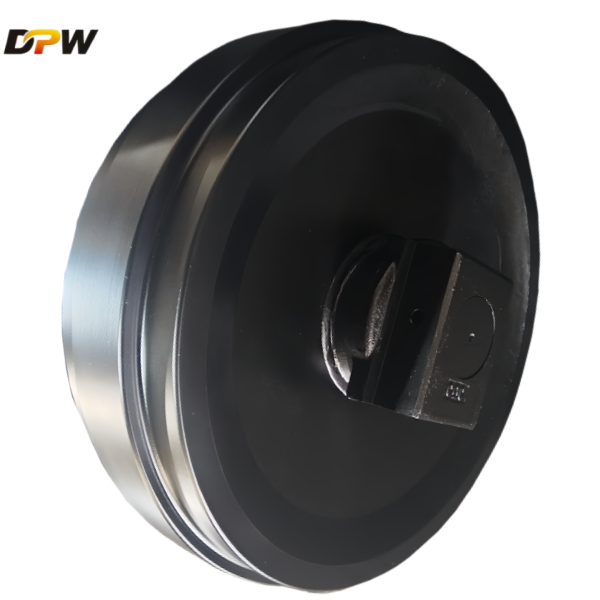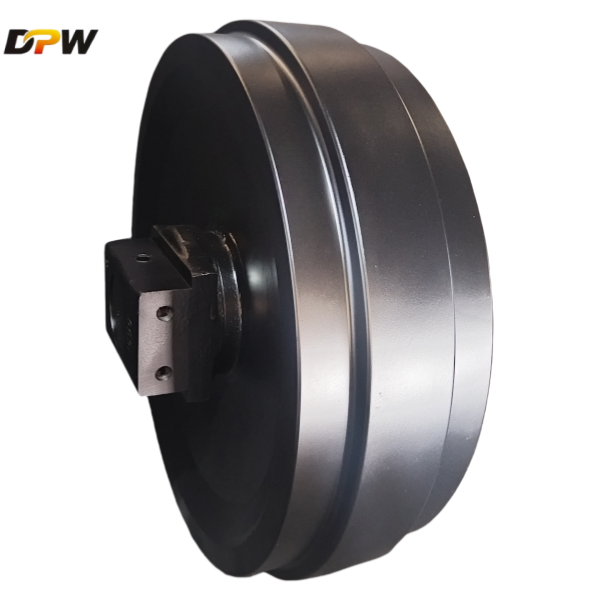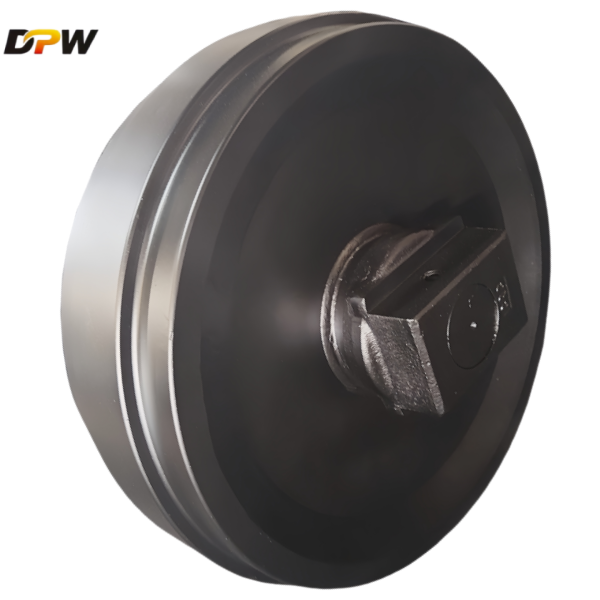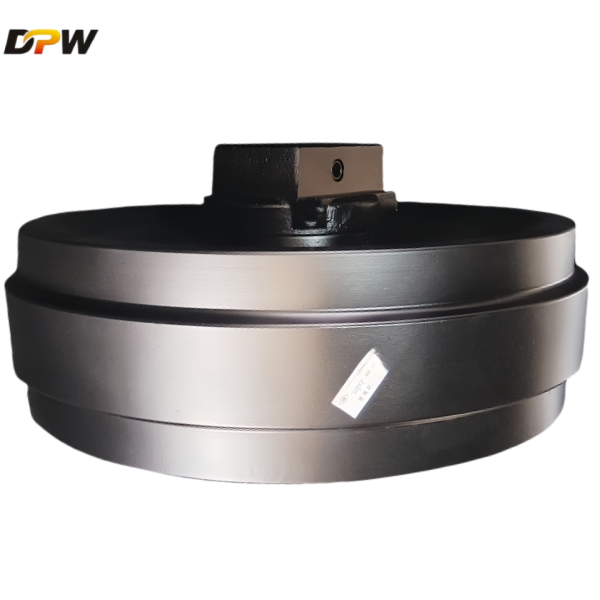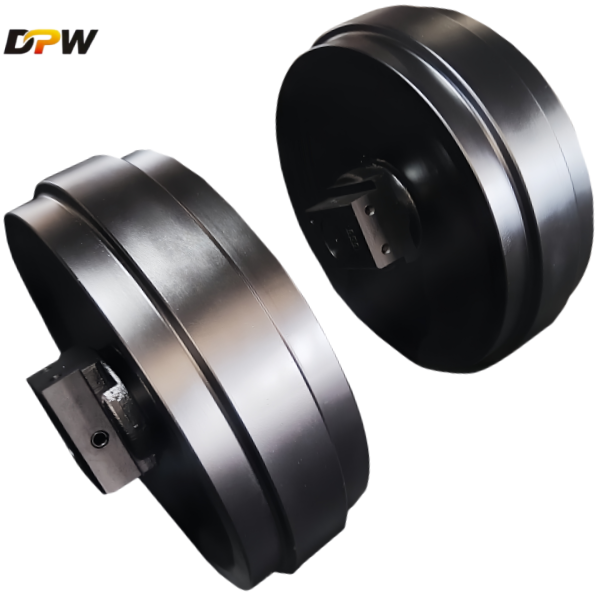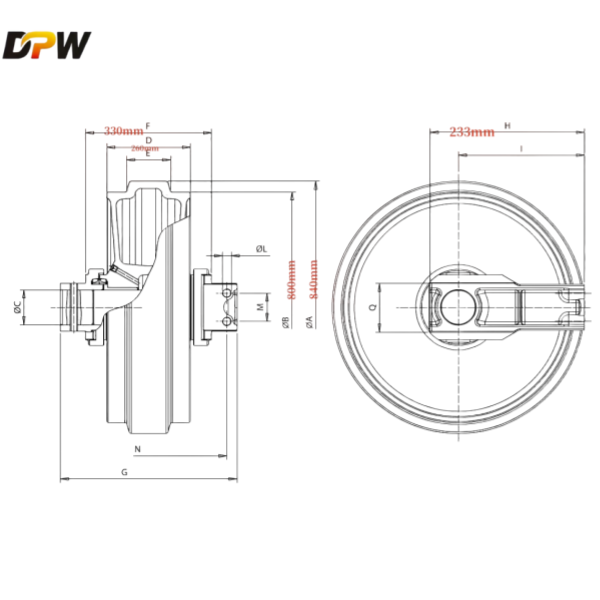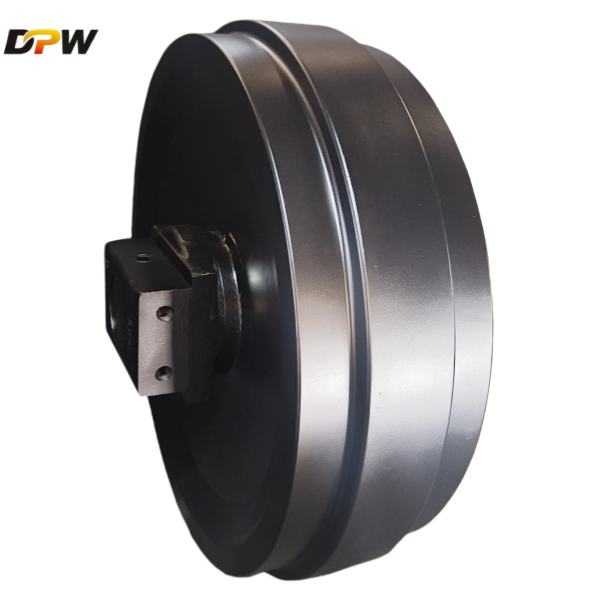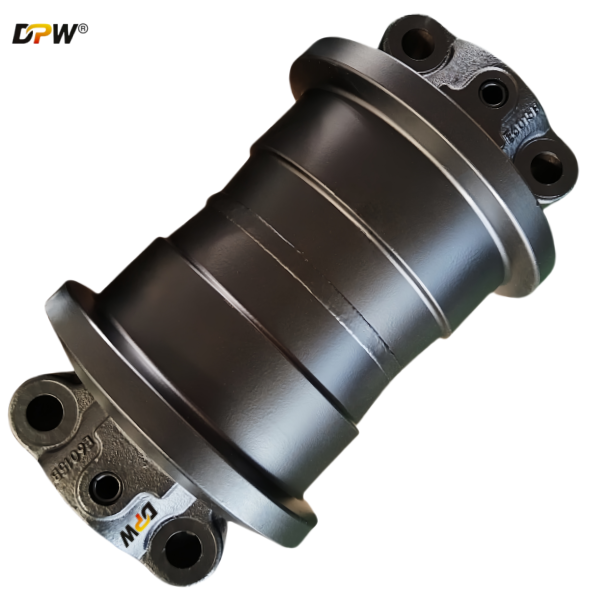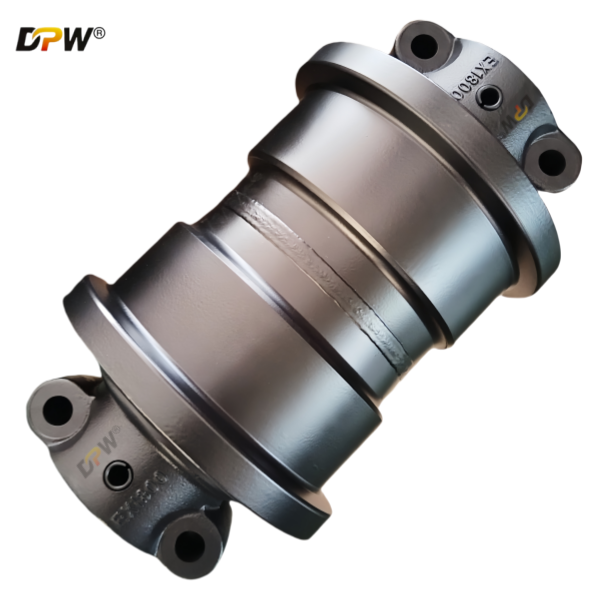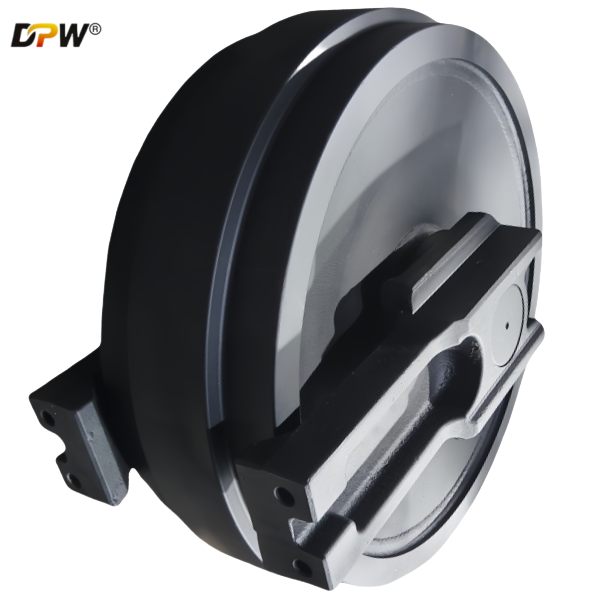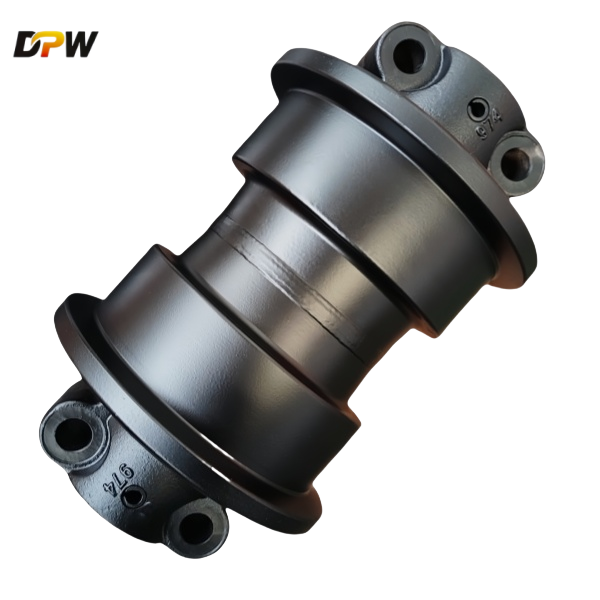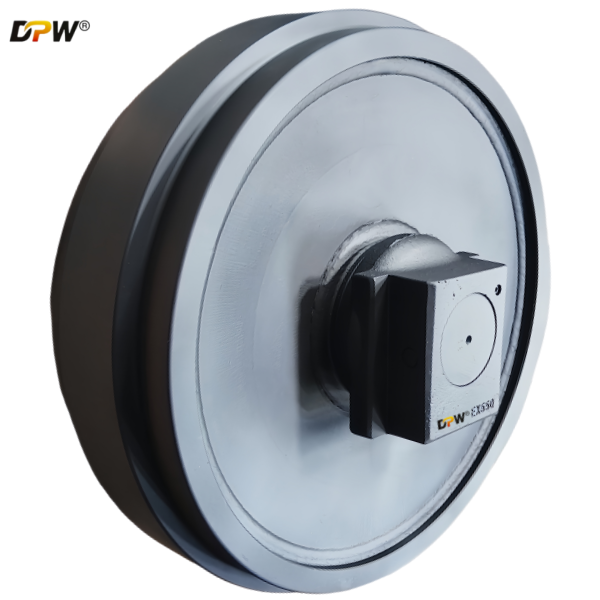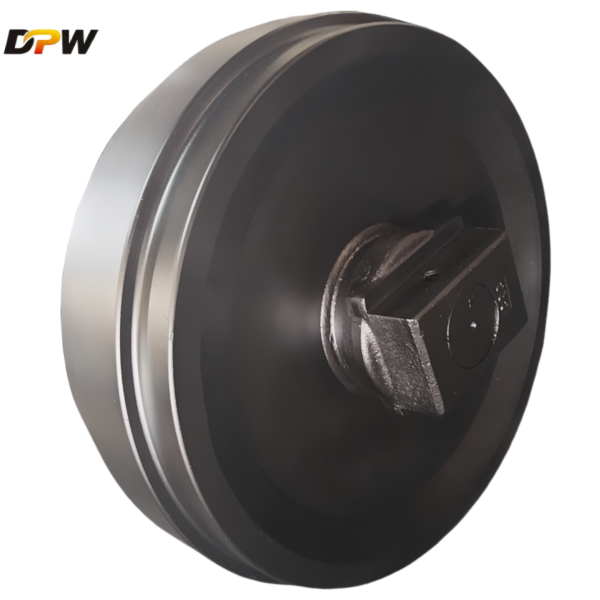
Hitachi 9134272/1026587/9188628 EX700/EX800/ZX800 Guide Wheel/Front Idler Wheel Assembly/Heavy duty crawler excvator chassis parts Manufacturer and Supplier
Product Specifications
Technical Specification: Guide Wheel / Front Idler Wheel Assembly
Part Identification:
Hitachi Part Numbers: 9134272, 1026587, 9188628 (Indicating design revisions or supplier variations).
Compatible Machine Models: Hitachi EX700, EX800, ZX800 Series Large Hydraulic Excavators.
Application: Undercarriage System, Front Guidance and Tensioning.
Component Aliases: Front Idler, Guide Idler, Track Guide Wheel.
1.0 Component Overview
The Part Numbers 9134272/1026587/9188628 refer to the Guide Wheel Assembly, universally recognized as the Front Idler. This is a pivotal, non-driven component positioned at the forward end of the excavator's undercarriage frame, directly opposing the drive sprocket. It serves two primary mechanical functions: guiding the track chain into a continuous loop and providing the sliding interface for track tension adjustment. Its design is optimized to endure significant impact loads and constant abrasive wear.
2.0 Primary Function & Operational Context
The core engineering functions of this assembly are:
Track Guidance and Path Definition: As the name "Guide Wheel" implies, it acts as the forward directional pivot point for the track chain, reversing its path after ground contact and guiding it smoothly back towards the drive sprocket.
Track Tension Adjustment Mechanism: The idler is mounted on a robust sliding mechanism that allows it to be moved forward or backward. This movement is controlled by a hydraulic or grease-filled tensioning cylinder, which is used to set the correct track sag—a critical parameter for optimizing performance, power efficiency, and undercarriage component life.
Primary Impact Absorption: Due to its forward-facing position, the idler is the first line of defense against obstacles like rocks, stumps, and debris. It is engineered to absorb and dissipate substantial shock loads that would otherwise be transmitted directly to the final drives and undercarriage structure.
Track Stabilization: The wide profile of the idler wheel helps to maintain lateral stability of the track chain, minimizing whip and oscillation during high-speed travel and turning.
3.0 Detailed Construction & Key Sub-Components
This assembly is a complex, sealed system designed for high-impact duty:
3.1 Idler Wheel (Rim): A large-diameter, robust wheel. Its surface is precisely machined to provide optimal contact with the track chain links. For heavy-duty applications, the rim may be a two-piece design with a replaceable wear ring.
3.2 Flanges: Integral lateral guides on both sides of the rim. These flanges are critical for containing the track chain, preventing lateral derailment during side-loading operations such as counter-rotation turns ("pivoting") and working on slopes.
3.3 Internal Bearing and Bushing System:
Shaft: A high-strength, hardened steel stationary shaft.
Bearings/Bushings: The idler housing rotates on the shaft via a set of large, heavy-duty tapered roller bearings or bronze bushings, selected for their capacity to handle extreme radial loads and occasional axial thrust.
3.4 Multi-Stage Sealing System: This is arguably the most critical subsystem. It typically consists of a primary radial lip seal, a secondary seal, and a labyrinth-like grease chamber. This multi-barrier approach is essential for effectively excluding fine, abrasive particles (e.g., quartz dust, crusher fines) and retaining the high-performance grease, thereby dictating the assembly's service interval.
3.5 Mounting Bracket and Sliding Surfaces: The assembly includes a forged or cast bracket with precisely machined sliding surfaces that interface with the matching guides on the undercarriage frame. These surfaces are often hardened or fitted with wear strips to ensure smooth adjustment and long-term alignment.
4.0 Material & Performance Specifications
Material: High-Carbon Alloy Steel Casting or Forging.
Hardness: The rim running surface and flanges are through-hardened or induction-hardened to a typical range of 55-62 HRC, providing an optimal balance of impact resistance and abrasion wear properties.
Lubrication: Pre-filled with a high-temperature, extreme-pressure (EP) lithium-complex grease. Most assemblies feature a standard grease fitting for periodic re-lubrication to purge the seal chamber of minor contaminants and extend service life.
5.0 Failure Modes & Maintenance Considerations
Wear Limits: Serviceability is determined by measuring the reduction in flange height and rim diameter against Hitachi's specified maximum wear limits. Worn flanges significantly increase the risk of track derailment.
Common Failure Modes:
Flange Spalling and Fracture: Cracking or breaking of flanges due to high-impact loads from obstacles.
Rim Grooving and Concave Wear: Abrasive wear from the track chain links forming grooves or a concave profile on the rim.
Bearing Seizure: A catastrophic failure often precipitated by seal failure, leading to contamination ingress. A seized idler acts as a brake, causing rapid, severe wear to the track chain bushings.
Sliding Mechanism Seizure: Corrosion or damage to the sliding brackets can prevent tension adjustment, locking the idler in place.
Maintenance Practice: Regular inspection for free rotation, structural integrity, and audible/visible signs of bearing failure is essential. Track tension must be checked and adjusted according to the manufacturer's operational manual. Crucially, the idler should be replaced in conjunction with the track chain and other undercarriage components to prevent accelerated, mismatched wear.
Replacement & Purchasing Tips:
OEM vs. Aftermarket – Hitachi OEM parts ensure perfect fit, but aftermarket options may be cost-effective.
Check Serial Number – Verify compatibility with your EX800 model (serial number helps).
Inspect Seals & Bushings – Ensure they are intact to prevent premature failure.
Where to Source a Replacement:
Specialists – Companies like DPW PARTS Track, Global Tracks, Track Shop.
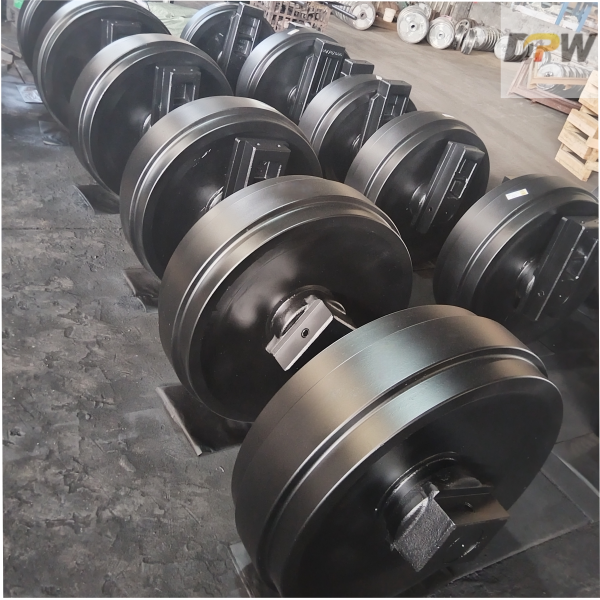
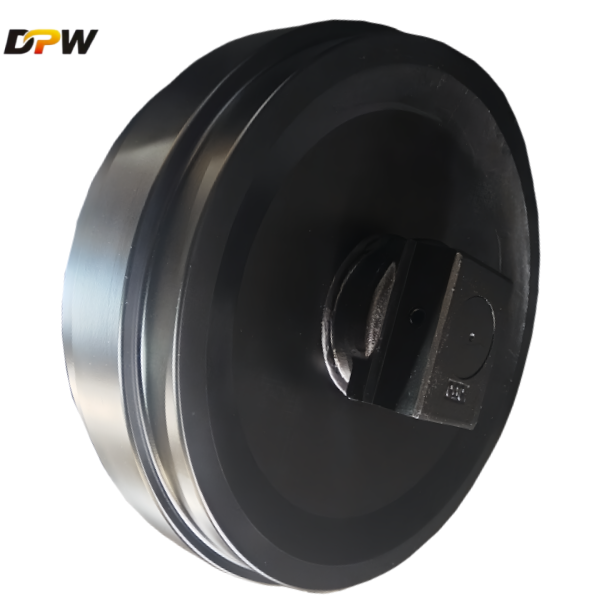
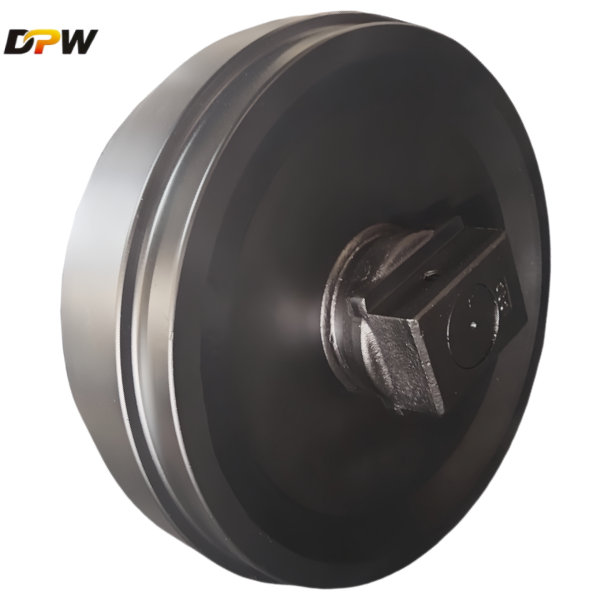
| |||||||||||||||||||||||||||||||||||||||||||||||||||||||||||||||||||||||||||||||||||||||||||||||||||||||||||||||||||||||||||||||||||||||||||||||||||||||||||||||||||||||||||||||||||||||||||||||||||||||||||||||||||||||||||||||||||||||||||||||||||||||||||||||||||||||||||||||||||||||||||||||||||||||||||||||||||||||||||||||||||||||||||||||||||||||||||||||||||||||||||||||||||||||||||||||||||||||||||||||||||||||||||||||||||||||||||||||||||||||||||||||||||||||||||||||||||||||||||||||||||||||||||||||||||||||||||||||||||||||||||||||||||||||||||||||||||||

